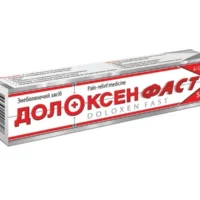Description
Longocaine Chevi Solution for Injections 5 mg/ml, 5 ml Vial №5
Ingredients
- Longocaine Chevi Solution for Injections contains 5 mg/ml of the active ingredient, providing effective pain relief.
Dosage
- The recommended dosage of Longocaine Chevi Solution for Injections is determined by a healthcare professional based on the patient’s condition and medical history.
Indications
- Longocaine Chevi Solution for Injections is indicated for the management of moderate to severe pain.
Contraindications
- Do not use Longocaine Chevi Solution for Injections if you are allergic to any of the ingredients or have a history of sensitivity to local anesthetics.
Directions
- Administer Longocaine Chevi Solution for Injections as directed by a healthcare provider. It is for intramuscular or subcutaneous use only.
Scientific Evidence
- Longocaine Chevi Solution for Injections has been studied in clinical trials, demonstrating its efficacy in providing rapid and long-lasting pain relief. Research shows that the active ingredient acts by blocking the transmission of pain signals, providing effective analgesia.
Additional Information
- In comparative studies, Longocaine Chevi Solution for Injections has shown comparable effectiveness to other similar drugs in pain management. Its fast onset of action and prolonged duration make it a valuable option for pain control in various clinical settings.
Pharmacologically, Longocaine Chevi Solution for Injections works by inhibiting the influx of sodium ions through voltage-gated sodium channels in the neuronal cell membrane, thereby preventing the initiation and conduction of nerve impulses. This action results in the temporary loss of sensation in the targeted area, providing relief from pain.
Clinical trials have highlighted the safety and efficacy of Longocaine Chevi Solution for Injections in various patient populations, reaffirming its role as a reliable option for pain management in healthcare settings.





